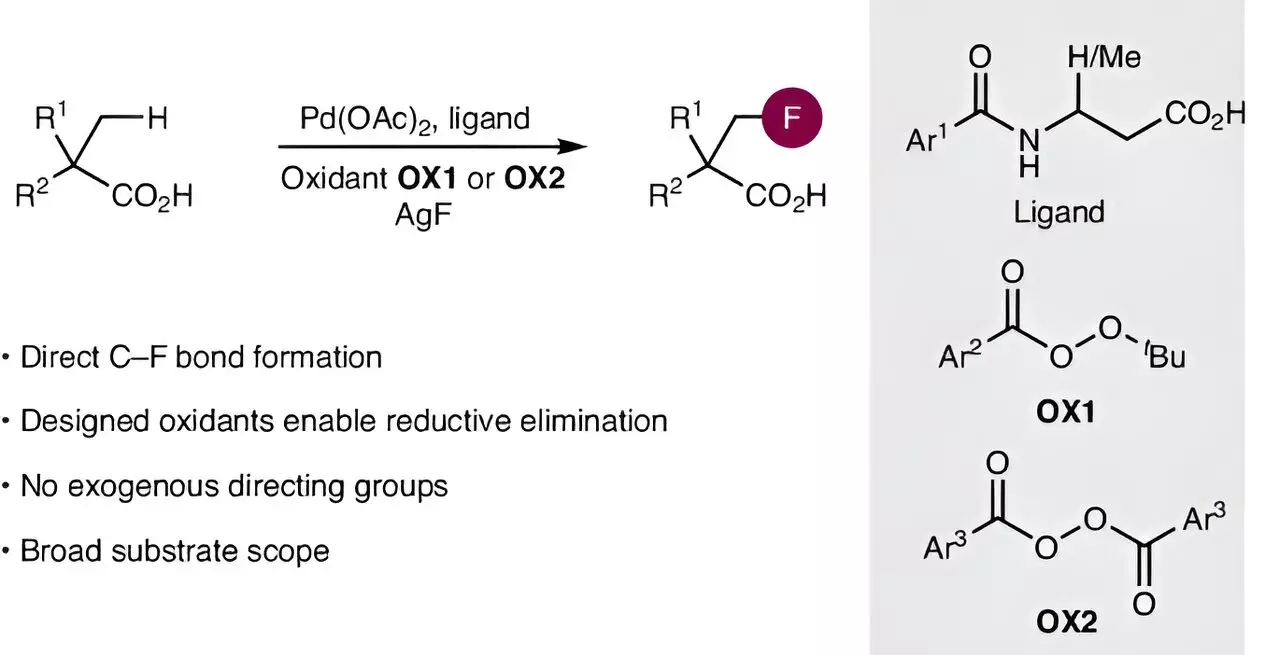Carboxylic acids stand at the core of organic chemistry, serving not only as fundamental building blocks in chemical reactions but also as vital components in pharmaceuticals—drugs like aspirin and ibuprofen are classic examples of their significance. Yet, the intriguing and versatile nature of these compounds can be enhanced with the addition of fluorine atoms, a modification that often leads to better potency and specificity in drug design. Traditionally, adding fluorine involves intricate, multi-step processes, which can be both a time drag and resource-intensive.
A Groundbreaking Method for Simplified Fluorination
An international research team led by the Otto Diels Institute of Organic Chemistry at Kiel University has recently made strides in this domain, as documented in their publication in *Nature Synthesis*. The researchers introduced a novel synthetic method enabling direct fluorination of carboxylic acids—a game-changing simplification that has the potential to accelerate pharmaceutical development. The innovation rests on successfully navigating two significant chemical challenges: activating the inert carbon-hydrogen (C-H) bond and creating a carbon-fluorine (C-F) bond.
The C-H activation, historically a daunting task, is facilitated in this method through the use of state-of-the-art palladium catalysts. Previous work by international research teams laid the groundwork for this process, but the Kiel University researchers have propelled the concept forward with more efficient catalysts specifically designed for this application. This not only enhances reaction efficiency but also opens the door to explore other complex organic molecules where fluorination might have been previously unfeasible.
The Innovation Behind the Catalyst and Reagent Design
The study emphasizes that the method’s success hinges not solely on the catalysts but also on the design of an innovative oxidizing agent. This nuanced reagent plays a pivotal role in maneuvering the chemical reaction toward a successful carbon-fluorine bond formation. According to Sourjya Mal, the leading author of the study, this unique approach allows for selectivity in reactions that have previously been elusive, showcasing the team’s novel angle to solving longstanding challenges in organic synthesis.
In observing the reaction pathways, researchers revealed that by synergistically combining the optimized catalyst and the novel oxidant, they unlocked pathways that would not be accessible with conventional methodologies. The implications of such a discovery extend beyond carboxylic acids; the principles established here could potentially be translated to other synthetically appealing procedures, suggesting a shift in how chemists might approach reaction design in the future.
Implications for Pharmaceutical Advancements
The introduction of this direct fluorination method indicates a significant leap forward in the realm of pharmaceutical research. Given the critical role that both carboxylic acids and fluorinated compounds play, this technique stands as a promising tool for expedient drug design and development. Professor Manuel van Gemmeren, a pivotal figure in this research, expresses optimism about the transformative potential of their findings, suggesting that this technique could streamline the process of synthesizing more effective medications.
This emerging method not only fosters quicker access to compounds that could have previously taken decades to develop but also enriches the chemical toolkit available to researchers. As the field of organic chemistry continues to evolve, approaches like these symbolize the relentless pursuit of efficiency and innovation, propelling forward the frontiers of drug discovery and molecular synthesis.


Leave a Reply